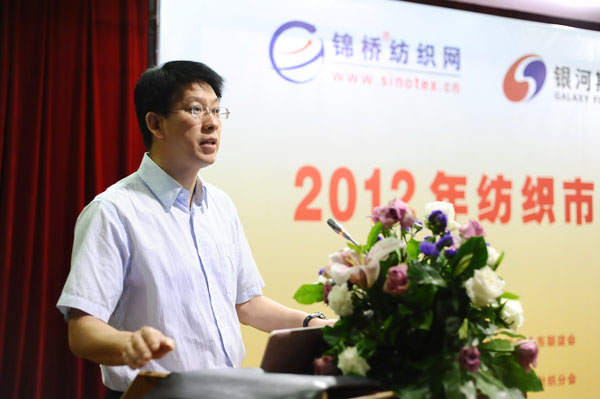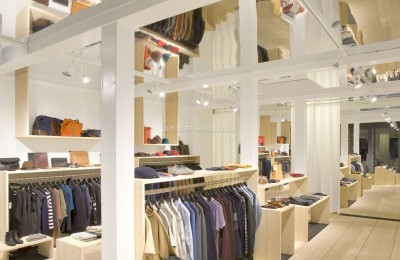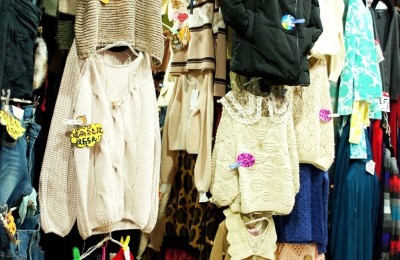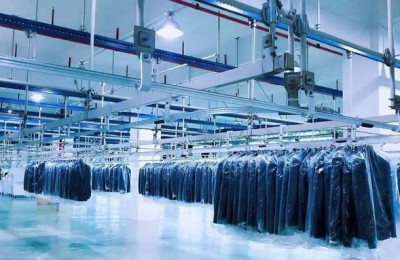Analysis of China’s Textile and Apparel Export Situation

First of all, I would like to thank the Shandong Foreign Economic and Trade Enterprises Association for setting up such a platform every year to provide everyone with market interaction and communication. I would also like to thank the organizers of this conference, General Manager Dong Yunliang and President Liu, for kindly inviting me to come and study and discuss with you. I am very pleased to see everyone attending the conference with great enthusiasm today, because the industry situation this year is more severe than ever before. This reflects the confidence of our Shandong textile enterprises, and I hope everyone can take this with them. Confidence to overcome difficulties. Today I will spend an hour introducing the current textile situation and share some information with you.
The first is the current basic situation of my country’s textile and apparel exports.
Judging from the customs data from January to April, the overall export situation is not optimistic. Textile and apparel exports increased by 0.5% from January to April. It is not expected that much will change in May.
At present, the main characteristics of textile and clothing exports are: first, the price of cotton is upside down, the export of cotton commodities has declined sharply, and the pressure on cotton spinning enterprises has increased. Imports of cotton yarn increased month by month, exports of cotton products decreased, and chemical fiber products increased. Secondly, operating costs are rising and labor costs are increasing. Our labor costs are much higher than those in India. Reduced competitiveness has led to the transfer of orders. It should be said that the market share in Europe and the United States has begun to decline since last year. Among the three major export markets, the United States has increased, Japan has stabilized, and the European Union has declined significantly. The share of Southeast Asian countries in EU and US apparel imports has increased. It can be seen from the figure that our declining points are all taken over by Southeast Asian countries. As markets in developing countries strengthen supervision and restrictions, new growth points are facing tests. Countries such as Turkey, Mexico, and Brazil restrict the export of Chinese goods through increased tariffs, quota restrictions, unilateral quantity restrictions, and export registration systems.
The following is an analysis of the domestic and foreign policy environment, which is also an issue of common concern to everyone.
Domestic trade environment analysis
The current economic environment in China should be the worst in three years. Investment, consumption and exports all fell, the growth rate of industrial added value fell to the lowest in three years, the CPI growth rate fell month by month, and the PPI decline expanded.
At present, governments at all levels are actively conducting research, and policy combinations are ready to be announced. In his speech, the Prime Minister said that stabilizing growth should be given a more important position, which sent us a very positive policy signal. The next step is to moderately fine-tune expectations, including proactive fiscal policies, increased tax cuts, and loose liquidity. The Ministry of Commerce implements the spirit of the central government and optimizes the “two layouts” of foreign trade: optimizing the international market layout-the African and Latin American markets; optimizing the domestic market layout-the transfer of industries from the east to the central and western regions. Promote the “three constructions” of foreign trade: the construction of demonstration bases for foreign trade transformation and upgrading, the construction of trade platforms, and the construction of e-commerce demonstration bases. Last year, the first batch of demonstration bases for foreign trade transformation and upgrading were announced. There are more than 50 bars in total, 11 of which are in the textile and clothing category, including two in Shandong, including Jimo Textile and Garment Market, Binzhou Home Textile and Fabric Textile Market. . It has now entered the review stage for the second batch.
International trade environment
The current European debt crisis is fermenting, reminding us to prepare for a protracted war. We should have a clear understanding. First, the overall sluggish recovery of the world economy has not changed, and sluggish global market demand will become the norm for a long time to come. Second, developed economies are reshaping the real economy, emerging economies are rising rapidly, and international competition has become more intense. Third, the multilateral trading system is facing severe tests, and regional economic cooperation is advancing rapidly. Then there is the obvious rise in trade protectionism, and the most important thing is the intensifying trade friction against China. This is the aspect that we feel the most.
Next, some policy suggestions are put forward to address the industry’s problems and difficulties in exporting.
At this year’s Spring Fair, we all felt the slow recovery and sluggish state of foreign trade. The shortage of orders puts us under greater pressure on the EU. Therefore, it is hoped that the country will maintain the stability and continuity of macro policies such as export tax rebates and provide time and space for industrial transformation and upgrading. Reduce obstacles in trade facilitation and create a good trade environment for export enterprises. The inversion of cotton prices at home and abroad has hindered the increase in commodity export prices and the growth of exports. It is imperative to reform the current cotton management system.
The last thing is what companies should do in the current difficult situation. At present, everyone has a consensus, that is, the development mode of foreign trade must be changed. We cannot adopt a homogeneous business philosophy. We must create unique features. What others don’t have and I have is the way to improve.
At present, opportunities and challenges coexist, and outstanding companies stand out.
Large group companies conduct diversified operations. Faced with the severe situation of textile and garment exports and the reality that the profits of the main textile industry are declining year by year, in order to survive and develop enterprises, large group companies mostly use their own financial advantages to carry out diversified operations to make up for the thin profits of the textile industry. Such as investing in real estate and financial services, investing in banks, and establishing small loans.��. In order to expand foreign sales channels, the company increased its investment in overseas marketing. In 2008, it acquired a German home textile company, which has more than 600 sales terminals in Germany.
Has its own factory. Advocate green production and focus on sustainable development. For example, Jiangsu Chenfeng grew up as a tailor and became the most famous foundry in China, with nearly 10 factories, each covering dozens of hectares. The story of what a McDonald’s owner does. Plant trees, and the valuable tree species in its factories are worth hundreds of millions. Join FLA and meet with foreign brands four times a year. Orders are pouring in. Many domestic foreign trade companies get orders through Chenfeng.
Bank-enterprise cooperation. Provide order financing to small and medium-sized enterprises. Tianjin Garment Import and Export Group works closely with Bank of China and China Export and Credit Insurance Corporation to provide financial support to manufacturing companies that are strapped for funds but have export orders.
This is the practice of several companies that I know so far. I hope it can open up the business ideas of the entrepreneurs here.
(The above speech is based on the main points of Zhang Xian’s report at the 2012 Textile Situation Report Conference and Industry Summit Forum held by Textile Network)
Disclaimer:
Disclaimer: Some of the texts, pictures, audios, and videos of some articles published on this site are from the Internet and do not represent the views of this site. The copyrights belong to the original authors. If you find that the information reproduced on this website infringes upon your rights and interests, please contact us and we will change or delete it as soon as possible. </p






